Severe flooding in southern China has put in question the flood-control and other functions of China’s most ambitious, costliest, and controversial water-control project—the Three Gorges Dam.
At 8 a.m. on July 20, China’s Three Gorges Dam on the Yangtze River had the highest peak flow since its completion. Water flowed into the dam at 70,000 cubic meters per second. Nine of the dam’s discharge channels were opened to release the floodwater from upstream to downstream of the dam.
Official media claimed that the Three Gorges Dam has stood up to its biggest flood-control test since completion, as the flow on the river’s upper reaches tops 70,000 cubic meters per second—20,000 cubic meters more than the flow during the 1998 floods that killed 4,150 people.
However, the “flood-control test” is far from over yet, as some of the already flood-stricken areas in the lower reaches of the dam are still fighting floodwaters.
Due to the floodwater released from the Three Gorges Dam and the torrential rains, the water level in the downstream Yangtze River in Hubei Province rose above the alert level along 628 miles of dikes on July 22. The water level of five major lakes and 603 dams in Hubei Province were also above the flood level, Wuhan Morning Post reported on July 23.
In another lower reach of the Yangtze River, a 300- to 500-meter-long (0.2 to 0.3 mile) stretch of riverbank in Mianchuan Island, (Jiangzhou Township, Jiujiang City, Jiangxi Province) collapsed on July 18 due to the rising Yangtze River.
On July 23 state-run media reported that the flooding on Mianchuan Island was so severe that residents feared a repeat of the massive floods of 1998 when the flood discharge from the Three Gorges Dam reached Jiujiang City on July 25. In the 1998 flood, the dikes in Jiangzhou Township breached, and many people had to evacuate the area. (http://news.bbc.co.uk/2/hi/asia-pacific/146455.stm)
As of July 21, at least 701 people have died and 347 are missing due to flooding in southern China, according to official reports.
A villager in Jiangxin Village on Mianchuan Island told an Epoch Times reporter on July 18 that most farmland close to the big dikes had been devoured by flood waters, and he has lost all the crops he had planted for the year. He said he has been hit by floods for three years in a row, and this flood could be as bad as the one in 1998.
At this critical time, with so many communities at risk, the Three Gorges Dam is releasing water from the reservoir at an accelerated rate. The release of floodwater into the lower reaches of the river in a flood season has raised doubts about the “flood control” function of the Three Gorges Dam.
The late Huang Wanli (1911–2001), a professor in the Hydraulic Engineering Department of Tsinghua University, was an opponent of the Three Gorges Dam construction since the 1990s. He had long predicated that the dam would regulate water in a “reversed way”—sluicing water out of the reservoir during the rainy season, when it is supposed to store water, and storing water during the dry season, when it is supposed to release water.
At 8 a.m. on July 20, China’s Three Gorges Dam on the Yangtze River had the highest peak flow since its completion. Water flowed into the dam at 70,000 cubic meters per second. Nine of the dam’s discharge channels were opened to release the floodwater from upstream to downstream of the dam.
Official media claimed that the Three Gorges Dam has stood up to its biggest flood-control test since completion, as the flow on the river’s upper reaches tops 70,000 cubic meters per second—20,000 cubic meters more than the flow during the 1998 floods that killed 4,150 people.
However, the “flood-control test” is far from over yet, as some of the already flood-stricken areas in the lower reaches of the dam are still fighting floodwaters.
Due to the floodwater released from the Three Gorges Dam and the torrential rains, the water level in the downstream Yangtze River in Hubei Province rose above the alert level along 628 miles of dikes on July 22. The water level of five major lakes and 603 dams in Hubei Province were also above the flood level, Wuhan Morning Post reported on July 23.
In another lower reach of the Yangtze River, a 300- to 500-meter-long (0.2 to 0.3 mile) stretch of riverbank in Mianchuan Island, (Jiangzhou Township, Jiujiang City, Jiangxi Province) collapsed on July 18 due to the rising Yangtze River.
On July 23 state-run media reported that the flooding on Mianchuan Island was so severe that residents feared a repeat of the massive floods of 1998 when the flood discharge from the Three Gorges Dam reached Jiujiang City on July 25. In the 1998 flood, the dikes in Jiangzhou Township breached, and many people had to evacuate the area. (http://news.bbc.co.uk/2/hi/asia-pacific/146455.stm)
As of July 21, at least 701 people have died and 347 are missing due to flooding in southern China, according to official reports.
A villager in Jiangxin Village on Mianchuan Island told an Epoch Times reporter on July 18 that most farmland close to the big dikes had been devoured by flood waters, and he has lost all the crops he had planted for the year. He said he has been hit by floods for three years in a row, and this flood could be as bad as the one in 1998.
Reverse Flood Control
At this critical time, with so many communities at risk, the Three Gorges Dam is releasing water from the reservoir at an accelerated rate. The release of floodwater into the lower reaches of the river in a flood season has raised doubts about the “flood control” function of the Three Gorges Dam.
The late Huang Wanli (1911–2001), a professor in the Hydraulic Engineering Department of Tsinghua University, was an opponent of the Three Gorges Dam construction since the 1990s. He had long predicated that the dam would regulate water in a “reversed way”—sluicing water out of the reservoir during the rainy season, when it is supposed to store water, and storing water during the dry season, when it is supposed to release water.
A Chinese blogger posted an article on the Internet criticizing the Three Gorges Dam for carrying out “magical” flood control—saving the upstream city of Chongqing while flooding the downstream city of Wuhan, or the other way around. The article was widely posted and quoted on the Web.
As the world’s largest hydropower project, is the Three Gorges Dam going to live up to its promise of controlling flooding along the Yangtze River in this round of floods?
Ironically, as areas along the Yangtze River have been plagued by floods in the past few years, officials have downgraded the dam’s flood-control capacity from “able to withstand the worst flood in 10,000 years” in 2003, to 1,000 years in 2007, and to 100 years in 2008.
Recently, just before the historical high-peak flow passed the Three Gorges Dam, Cai Qihua, chief of the Yangtze River Water Resources Commission, was quoted on China’s state-run CCTV as saying, “We cannot put all our hopes on the Three Gorges Dam this year.”
Hydrology expert Wang Weiluo, in an interview on Germany’s international broadcaster Deutsche Welle, recently commented on how bad the recent floods along the Yangtze River have been: “Chongqing City is located directly upstream of the dam. Fourteen of its counties and cities are flooding now. Going further up, many people have died because of the severe floods in Sichuan Province.
“Downstream of the dam, the water levels in Wuhan city and Hong Lake in Hubei Province and the Dongting Lake areas in both Hunan and Hubei Province are fairly high. The water level of Poyang Lake in Jiangxi and Anhui Provinces is also very high. Over 100 dams near the Poyang Lake are full,” Wang said.
The dam’s three major functions are supposed to be flood control, shipping, and power generation. However, Wang says that the flood this time has proven that two and one-half of the three functions do not exist: “It does not control floods. The shipping services in the entire Three Gorges channels have been suspended because of the flood.
“We can also forget about shipping in drought season,” Wang said. (This is because the reservoir retains the water, so the water level downstream will be even lower.)
Wang further explained: “We could already see the bottom of the Jialing River—one of the Yangtze’s branches—in Chongqing City, based on pictures taken last year. Now the Jialing River is flooding, and there is a lot of mud in the water. The water cannot really be used to generate power because the mud would cause significant damage to the turbines.”
AFP reported in July of last year: “China’s massive dam projects have been a source of controversy for years. The government insists they provide a clean source of energy and control flooding, with the world-biggest Three Gorges Dam the highest-profile example.
“But critics say the dams often cause huge environmental problems and do little to control floods, while millions of people have been displaced to make way for them, and the projects are often riddled with corruption.
“China Daily reported last month that several dams on China’s Yellow River were close to collapse just a few years after they were built, and there are concerns that over 40 percent of the nation’s reservoirs were unsafe.”
As the world’s largest hydropower project, is the Three Gorges Dam going to live up to its promise of controlling flooding along the Yangtze River in this round of floods?
Ironically, as areas along the Yangtze River have been plagued by floods in the past few years, officials have downgraded the dam’s flood-control capacity from “able to withstand the worst flood in 10,000 years” in 2003, to 1,000 years in 2007, and to 100 years in 2008.
Recently, just before the historical high-peak flow passed the Three Gorges Dam, Cai Qihua, chief of the Yangtze River Water Resources Commission, was quoted on China’s state-run CCTV as saying, “We cannot put all our hopes on the Three Gorges Dam this year.”
Critics Cite Failures
Hydrology expert Wang Weiluo, in an interview on Germany’s international broadcaster Deutsche Welle, recently commented on how bad the recent floods along the Yangtze River have been: “Chongqing City is located directly upstream of the dam. Fourteen of its counties and cities are flooding now. Going further up, many people have died because of the severe floods in Sichuan Province.
“Downstream of the dam, the water levels in Wuhan city and Hong Lake in Hubei Province and the Dongting Lake areas in both Hunan and Hubei Province are fairly high. The water level of Poyang Lake in Jiangxi and Anhui Provinces is also very high. Over 100 dams near the Poyang Lake are full,” Wang said.
The dam’s three major functions are supposed to be flood control, shipping, and power generation. However, Wang says that the flood this time has proven that two and one-half of the three functions do not exist: “It does not control floods. The shipping services in the entire Three Gorges channels have been suspended because of the flood.
“We can also forget about shipping in drought season,” Wang said. (This is because the reservoir retains the water, so the water level downstream will be even lower.)
Wang further explained: “We could already see the bottom of the Jialing River—one of the Yangtze’s branches—in Chongqing City, based on pictures taken last year. Now the Jialing River is flooding, and there is a lot of mud in the water. The water cannot really be used to generate power because the mud would cause significant damage to the turbines.”
AFP reported in July of last year: “China’s massive dam projects have been a source of controversy for years. The government insists they provide a clean source of energy and control flooding, with the world-biggest Three Gorges Dam the highest-profile example.
“But critics say the dams often cause huge environmental problems and do little to control floods, while millions of people have been displaced to make way for them, and the projects are often riddled with corruption.
“China Daily reported last month that several dams on China’s Yellow River were close to collapse just a few years after they were built, and there are concerns that over 40 percent of the nation’s reservoirs were unsafe.”
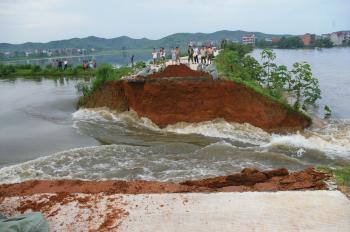
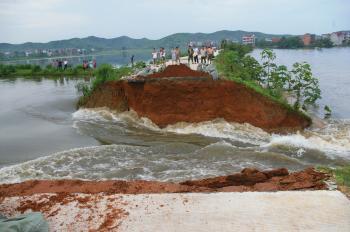
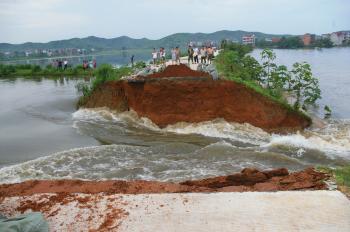
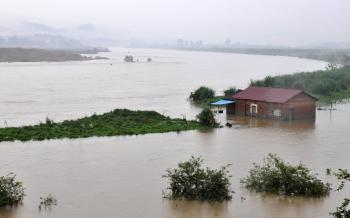
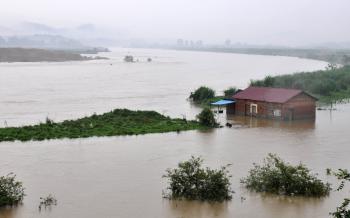
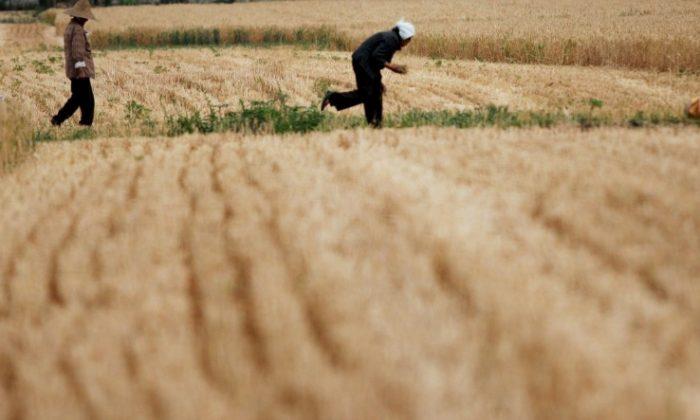

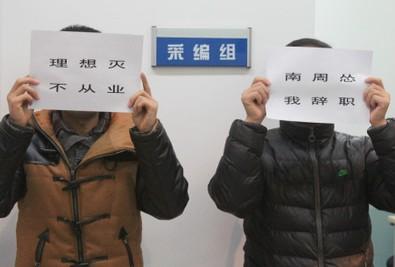
Friends Read Free